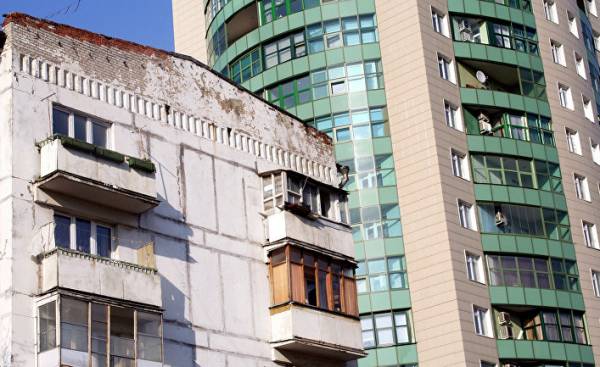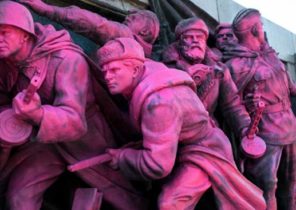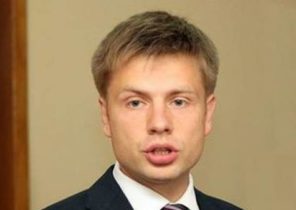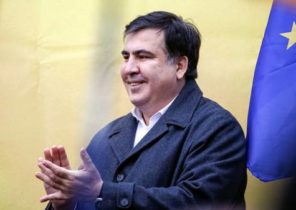
About 1.6 million residents live in dilapidated homes that are already beyond repair. The mayor of Moscow Sergei Sobyanin told Russian President Vladimir Putin during their meeting last week.
“Expectations in order for these houses to be demolished and in their place new housing to build,” Putin said as if nothing had happened, like they had talked about the old country Sobyanin.
The house in question is a five — story building, built under Nikita Khrushchev in the 1950-ies and 1960-ies — has long served its time. In the period of their construction they were regarded as a temporary shelter, therefore they should not have been kept so long.
The problem is that, firstly, such buildings very much, and secondly, they were built in the framework of the socialist state, the legal environment is very different from the legal environment of modern Russia. Even Russian citizens today have a right to private property.
However, before we begin to consider all the difficulties facing a politician who was given the task to follow the trail where you stumbled over many of his predecessors, it is necessary to understand the significance of this road.
In 1956-1957 the Soviet architect Natan Osterman, along with his assistants built an experimental block of houses on the South-West of Moscow. In the new Cheryomushki was a brick house, block houses and large buildings, most of which were five-storey buildings did not have balconies and devoid of any decoration. They stood in the middle of fields close to villages, which still existed in those days.
Today, this district of Moscow is one of the most prestigious and expensive. It is considered to be almost the city centre and boasts good schools.
In 1956 it was a project of national importance for the country, whose population was 200 million people, most of which was simply nowhere to live. In the United States never had a housing crisis of this magnitude. To some extent this has survived the crisis of postwar Europe.
But the Soviet Union of the 1940s and 1950s years was different from them. It was a place where he faced the rapid industrialization and urbanization and large-scale brutal war, which together led to an acute shortage of housing of any kind.
While the 1917 revolution unfolded in a predominantly agrarian country where only 15% of the population lived in cities, the Soviet Union in the second half of 1950-ies was on the verge of its transformation into urbanized society. By 1960, 50% of the population were already urban dwellers.
Only in Moscow the number of inhabitants increased 3 or 4 times — it all depends on whether you take as a starting point a 1917 or 1920, in the interval between which the number of its inhabitants declined from 1.7 million to 1 million people. In any case, by the end of 1950-ies Moscow, where there lived 5 million people, had somehow to do with housing for up to 2 million people.
The population growth of cities 10 times it was not unusual: from 1917 to the 1950-ies the number of inhabitants of Yekaterinburg and Novosibirsk increased by 10 times. However, in the 1930s and 1940s, the years we have built quite a few “socialist housing” for the workers and engineers of the factories.
The lack of financial resources, acute shortages of construction materials and the lack of the political elite desire to solve such a petty issue, like housing, have led to the present catastrophe, which Nikita Khrushchev had inherited from Joseph Stalin.
The ninth district of Cheryomushki became an experimental platform, which Khrushchev had hoped to use to solve the problem of housing. Such neighborhoods were later built all over the country.
The vast majority of Russians, including me, grew up in such neighborhoods. These districts usually had green spaces, multi-storey buildings, located at a distance of 50-200 meters from each other, the metro station nearby and the entire infrastructure within walking distance.
These areas could be extremely pleasant place to live, if the house looked a little more attractive and if it were sold in stores food of higher quality. But we still loved these neighborhoods. We simply had nothing with which to compare them. And, of course, we greatly appreciated the clean air, walking in forest parks, skiing in winter and Biking in the summer.
First, in these areas were built of panel five-story building. In the late 1960-ies began to be erected prefabricated houses, which were 9 to 16 floors, which were designed to accommodate more people in the same area.
In this type of house accounts for 80% of urban buildings in the former Soviet space. The demolition and rebuilding of these homes is absolutely incredible company, which is now not even considered. Only Moscow can afford to solve this problem, but even she can afford to solve it only partly.
A significant part of the built in Soviet times, housing is in disrepair. Houses that will be demolished in Moscow, represent a five-story building, which stood much longer than those 25 who was put on the project. Despite the efforts made in this regard earlier, most of these buildings still standing in their places.
The plan is to demolish and build at least 25 million square meters of housing. That’s a lot. It is more than 10% of the housing Fund of Moscow. This square is home to 1.6 million people. Soviet construction industry would require 10 years to implement this plan.
In other words, to put it mildly, very ambitious plan. So many perceived it is shown on television meeting Putin and Sobyanin as part of the beginning of the campaign. Many noted that such a gigantic construction project will be a real bonanza for construction companies owned by the friends of the mayor.
However, the truth is that you do not need to rebuild one-tenth of the largest cities in Russia to win the election. Now Sobyanin and, moreover, Putin has no strong enough opponents. The Kremlin has tried to get rid of all of them.
The implementation of this project will take more than 10 years, perhaps even decades and be extremely expensive. While its estimated cost is estimated at 4-6 trillion rubles (68-103 billion). It should also be noted that at the preliminary stage, the numbers always are rather abstractions, and they usually grossly underestimated.
Personally, I’m of this story suggests that modern Russia was a prisoner of the Soviet policy. Even if Moscow has significantly improved its housing stock, the majority of Russians living abroad, could not afford to buy housing there. We should wait until a panel of the house gradually themselves apart and make space for what we can offer our children.
Maxim Trudolyubov is a senior research fellow, the Kennan Institute and editor in chief of the independent business newspaper “Vedomosti”.







